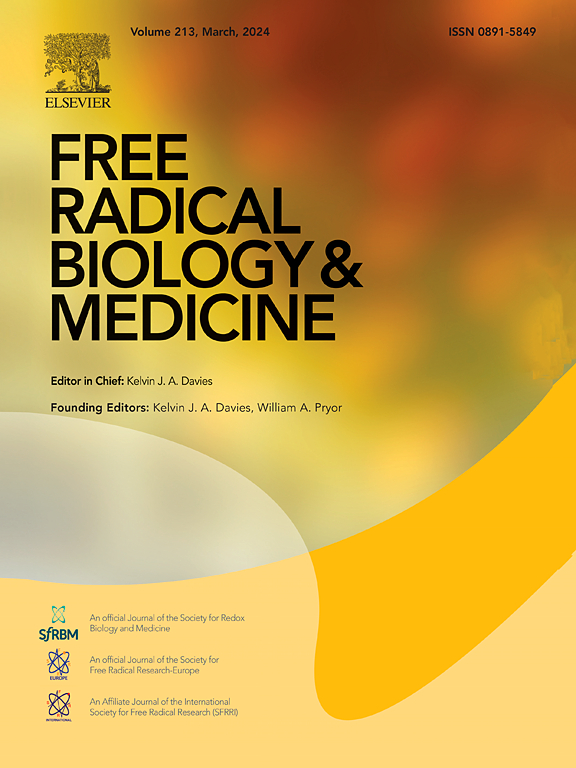Nitric oxide mediates negative feedback on the TXNIP/NLRP3 inflammasome pathway to prevent retinal neurovascular unit dysfunction in early diabetic retinopathy
IF 7.1
2区 生物学
Q1 BIOCHEMISTRY & MOLECULAR BIOLOGY
引用次数: 0
Abstract
Diabetic retinopathy (DR) is a leading cause of vision impairment in working-age adults, and is driven by complex neurovascular dysfunction. This study aimed to elucidate whether nitric oxide (NO) can modulate the TXNIP/NLRP3 inflammasome pathway and mitigate retinal neurovascular unit (NVU) damage during early DR. In an in vitro co-culture system, silencing TXNIP or NLRP3 in retinal microglia (RMG) significantly upregulated glial cell-derived neurotrophic factor (GDNF) and downregulated inducible nitric oxide synthase (iNOS) expression in retinal ganglion cells (RGC). Moreover, it resulted in decreased iNOS and vascular endothelial growth factor A (VEGFA) levels and enhanced the expression of tight junction proteins (Occludin and ZO-1) in retinal microvascular endothelial cells (RMEC), while also reducing NO release and inhibiting RMEC tube formation. Treatment with S-nitroso-N-acetyl penicillamine (SNAP), an NO donor, significantly downregulated TXNIP/NLRP3 inflammasome signaling in RMG, decreased RGC apoptosis, and inhibited tube formation in RMEC. It also upregulated GDNF, suppressed iNOS in RGC, decreased VEGFA, and improved tight junction proteins in RMEC. Treatment with 1400W, an iNOS inhibitor, resulted in decreased NO concentration and increased IL-1β levels in the co-culture supernatant, without significantly affecting iNOS expression in RGC or RMEC. In an early DR rat model, Electroretinogram (ERG), Optical Coherence Tomography (OCT), Fluorescein Angiography (FFA), Evans blue assays, Immunofluorescence staining, and TUNEL staining confirmed that sodium nitroprusside (SNP), NO donor administration mitigated retinal neural and vascular dysfunction, and preserved retinal NVU integrity. Concurrently, SNP treatment reduced IL-1β expression and increased GDNF and Occludin levels in the early DR retina. Genetic Association Database (GAD) enrichment analysis and protein-protein interaction (PPI) network validation indicated that NO functions as a downstream mediator of the TXNIP/NLRP3 inflammasome pathway and exhibits a strong association with DR. These findings suggest that NO mediates negative feedback in the TXNIP/NLRP3 inflammasome pathway to exert protective effects against retinal NVU dysfunction in early DR, thereby offering potential therapeutic strategies for early intervention in DR.

求助全文
约1分钟内获得全文
求助全文
来源期刊

Free Radical Biology and Medicine
医学-内分泌学与代谢
CiteScore
14.00
自引率
4.10%
发文量
850
审稿时长
22 days
期刊介绍:
Free Radical Biology and Medicine is a leading journal in the field of redox biology, which is the study of the role of reactive oxygen species (ROS) and other oxidizing agents in biological systems. The journal serves as a premier forum for publishing innovative and groundbreaking research that explores the redox biology of health and disease, covering a wide range of topics and disciplines. Free Radical Biology and Medicine also commissions Special Issues that highlight recent advances in both basic and clinical research, with a particular emphasis on the mechanisms underlying altered metabolism and redox signaling. These Special Issues aim to provide a focused platform for the latest research in the field, fostering collaboration and knowledge exchange among researchers and clinicians.
 求助内容:
求助内容: 应助结果提醒方式:
应助结果提醒方式:


